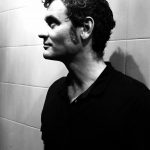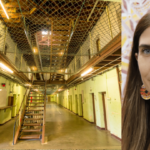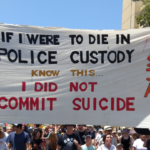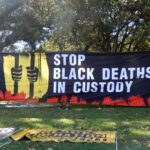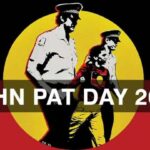Australian Authorities Play Dumb Over Yet Another Aboriginal Death in Custody
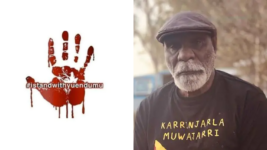
Two plainclothes police officers intervened in an altercation in Alice Springs Coles supermarket at around 1.10 pm on Tuesday, 27 May 2025, which involved two security guards and a 24-year-old Warlpiri man with disabilities. The police used force to get the Indigenous man to the floor, and then restrained him for some minutes, until he lost consciousness, stopped breathing and died.
Yet, on conducting an autopsy, the Northern Territory’s chief forensic officer announced the very next day that the cause of death of the young man was “undetermined”.
However, one might consider that the Aboriginal death in custody most likely had something to do with the pair of police officers on top of the man, restraining him on the floor, and the force and pressure applied upon the deceased may too have had something to do with the sudden death that occurred, especially as these actions all happened simultaneously. Of course, that’s all speculative.
Many have raised the significance of the Alice Springs incident happening just on five years of the Minnesota police killing of African American man George Floyd, who was restrained until he was asphyxiated, as last Saturday marked five years since that tragedy.
But Australians hardly have to look to the US for similar examples of Black custody deaths. Dunghutti man David Dungay Junior stopped breathing with five guards on him at Long Bay Gaol in 2015. Wayne “Fella” Morrison was forcefully held down at SA’s Yatala Prison in 2016, then he stopped breathing, while Noongar man Mr Riley died with multiple officers on top of him in Perth in 2017.
The reasons behind these numerous cases involving the death of a First Nations person whilst in Australian police or corrections custody don’t really appear all that mysterious, despite that the authorities always having a difficult time when trying to pin down the cause of death, and while these are not everyday events, their occurrence can neither be said to be rare.
Indeed, these First Nations asphyxiation deaths in custody do occur somewhat regularly, as too does the playing dumb about them by the Australian authorities in their immediate aftermath, which continues until a final coronial inquiry turns up systemic issues but no real reason for criminal charges to be pressed.
Obfuscation: the official approach
All reports on the 27 May death allege that the 24-year-old man was shoplifting, when the altercation occurred, which isn’t an offence that usually warrants the death penalty in Australia.
But the mere allegation of shoplifting can result in death if you’re Indigenous, as the 2020 death of Veronica Nelson while on remand in Victoria over claims she had been shoplifting reminds. The Gunditjmara, Dja Dja Wurrung, Wiradjuri and Yorta Yorta woman died due to medical neglect whilst in custody in regard to such allegations.
Respected Warlpiri elder Uncle Ned Jampijinpa Hargraves shed more light on what his community understands to have occurred this week in a 28 May statement, in which he reveals that the young Warlpiri man that did die on Tuesday was his jaja or grandson, and he further adds that his family, the Warlpiri people and many other people in central Australia “are devastated by his death”.
“We know that he was held down by two police until he lost consciousness and perished. But at the moment, we are in the dark about what really happened,” Uncle Ned explained. “It is disgraceful that police are already putting out stories that portray my jaja as a criminal. We are always told by lawyers that we need to wait for investigations to take place before we comment on events.”
The Warlpiri elder added his family is demanding to see the footage captured by CCTV, as well as that resulting from body-worn cameras security guards were apparently wearing, which NT assistant commissioner Wurst has mentioned that his agency is currently in possession of.
“This young man was living away from his community, in town, in supported accommodation because of his disabilities and he was very vulnerable. He needed support and not to be criminalised because of his disability,” said Hargraves, who launched Karrinjarla Muwajarri, a “ceasefire” campaign calling for a prohibition on police firearms in remote Aboriginal communities, in 2022.
“What are the police doing using such force on a vulnerable young man in a supermarket?” he asked. “Did they even try to deescalate?”
The death of Kumanjayi Walker
Not only are custody deaths involving pressure applied in restraining Aboriginal people by police or prisoner guards not uncommon, but First Peoples deaths in custody are a decadeslong nationwide crisis in this country, which was the subject of a Royal Commission that handed down its final report containing 339 recommendations, many of which remain unactioned, in 1991.
Since the report’s release, 594 more Aboriginal people have died in the custody of Australian police or prison guards.
The late 1980s launched Royal Commission into Aboriginal Deaths in Custody was established because there was a crisis in these deaths at that time, and despite it having taken place, these custodial fatalities continue unabated, yet no police officer or prison guard has ever been convicted over any of these deaths. In fact, it’s rare for any officer to stand trial in relation to one.
Hargrave’s launched the Karrinjarla Muwajarri campaign in the wake of another death in custody tragedy that occurred in Yuendumu in 2019, which involved NT police constable Zachary Rolfe shooting dead 19-year-old Warlpiri man Kumanjayi Walker in a family home on 9 November, with the long-anticipated coronial inquiry into this death set to be released on the 10th of June this year.
So, disorderly was the killing of Kumanjayi that the authorities did not wait for the coronial inquest outcomes before charging Rolfe over the killing, just three days later. And the then constable was charged with a sliding scale of offences, with the first count being murder, followed by the backup charge of manslaughter, and if that failed, he was also charged with violent act causing death.
On trial, the evidence before the court was Walker struck Rolfe in the shoulder with a small pair of scissors, which led the police officer to shoot the teenager in the back, but Rolfe didn’t stop there, as he shot Kumanjayi twice more at close range in the side his torso, whilst his partner, another police constable, was on top of the boy restraining him on his back on the ground.
However, despite this scenario, the all-non-Indigenous jury acquitted Rolfe of all three charges, leaving Australia with the unblemished record of no police officer or prison guard ever having been found guilty in relation to a First Nations death in custody.
Protecting their own
The approach to deaths in custody has improved slightly over recent years, where once it was rare for any officer to stand trial in relation to a death, three such trials have taken place over the last five years, yet all have resulted in acquittals. And the NSW Coroner has twice made recommendations for charges to be laid in relation to two custody deaths, which was also once unheard of.
Hargraves in his statement points out that since the 2007 launched NT Intervention, the approach of authorities to First Peoples in the Northern Territory has been more hostile, and further, with the Country Liberals Finocchiaro ministry coming to power after last August’s territory election, there has been an increased focus on cracking down on law-and-order and seeing more bodies in prisons.
Hargraves further explained Yuendumu had applied late last year to establish its own Law and Justice Group, in line with the Sentencing Act 1995 (NT), and whilst they were provided with a small grant to establish this proposed new front door into the remote community, the Finocchiaro government has since come along, removed the funding and ended the self-determining proposal.
“We cannot tolerate this situation, with continued brutality and lack of respect. We will be calling for action from supporters to demand accountability, justice and self-determination,” Uncle Ned made certain in ending his 28 May statement.
“The deaths and the racism need to stop.”
